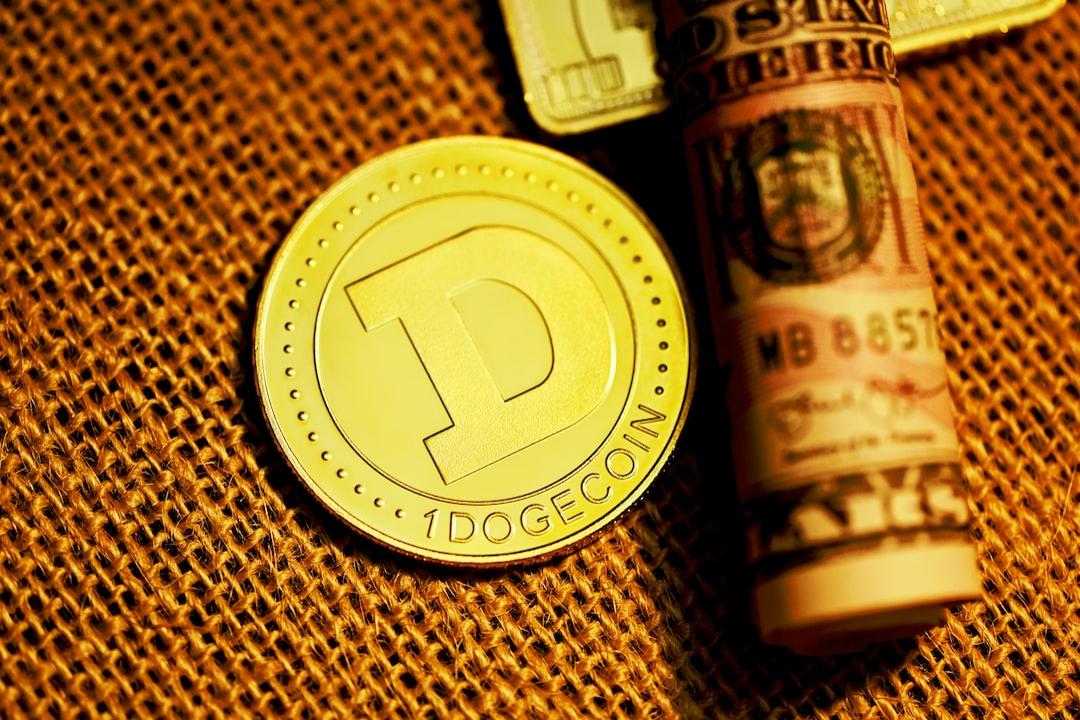This research report delves into BounceBit, outlining its product design concept and HTX Ventures’ investment philosophy. The article is sourced from HTX Ventures and compiled, organized, and written by PANews.
Table of Contents:
What is BounceBit?
How does BounceBit work?
Why did HTX Ventures invest in BounceBit?
Outlook for the future
With the approval of BTC spot ETF, institutions and individuals worldwide are continuously increasing their BTC holdings, leading to a rise in BTC prices. It has now climbed to become one of the top ten assets in global market capitalization. In this market cycle, BTC scalability and layer 2 solutions have gained significant attention. The exploration of diversified income from BTC ecosystem assets is attracting the attention of the cryptocurrency market.
So, which solution will be the optimal one to address the issues of generating interest from BTC assets, network confirmation delays, lack of smart contracts, and high gas fees?
Currently, there are two main solutions to address the prosperity of the BTC ecosystem: Layer 2 and sidechains.
As one of the investors in BounceBit’s $6 million financing, HTX Ventures sees BounceBits and its CeFi+DeFi product model as a potential innovative solution to open up the BTC ecosystem and gain more applications. This research report delves into BounceBit, outlining its product design concept and HTX Ventures’ investment philosophy.
What is BounceBit?
BounceBit is a BTC repledge chain designed specifically for Bitcoin. Its built-in BTC repledge infrastructure provides a foundational layer for various repledge products. This foundational layer is protected by Mainnet Digital and Ceffu’s regulated custody. It adopts a hybrid PoS mechanism of BTC+BounceBit for verification.
BounceBit solves the trust issue of underlying BTC assets through multi-party custody and establishes BBTC for DeFi interaction on the Bounce mainnet. Native BTC assets are used for low-risk arbitrage strategies on various centralized exchanges. Additionally, under the hybrid token pledging mechanism, pledging using BBTC+BB (BounceBit’s native token) generates LSD tokens, further gaining node pledging rewards and repledge returns.
By combining centralized custody and sidechains, BounceBit aims to overcome the trust issues that sidechains have long faced while activating the BTC ecosystem. This will reduce transaction costs and unlock the financial potential of BTC, allowing it to be applied in various scenarios such as DeFi, gaming, and social platforms.
How does BounceBit work?
BounceBit’s product design is cleverly crafted, as shown in the diagram below:

BounceBit operation mechanism and revenue sources diagram
Users can deposit various types of on-chain BTC assets into the BounceBit protocol. The protocol is actually supervised by the MPC wallet jointly managed by BounceBit, CEFFU, and Mainnet Digital, thus addressing the trust mechanism issue and ensuring the security of users’ assets.
Through Ceffu’s MirrorX and other over-the-counter trading settlement (OES) solutions, users can securely access the exchange’s deep liquidity and earn profits through diversified trading strategies. The funds are securely retained in the on-chain MPC wallet. This wallet technology reduces the risk of single point of failure (SPOF) by splitting the private key into multiple parts. Additionally, because users’ funds are not actually stored on any centralized exchange but reflected through Ceffu, counterparty risks are reduced.
BounceBit collaborates with a series of asset managers with a long track record of positive returns for trading through MirrorX. All of these asset managers primarily employ interest rate arbitrage as their main trading strategy. Interest rate arbitrage is a risk-free strategy that takes advantage of the interest rate differences between different markets.
On the other hand, when users transfer native assets to BounceBit, new B-Token assets are minted. Taking BTC as an example, users will receive BBTC assets operating on the BounceBit mainnet after depositing BTC. Currently, these assets can be used for two main on-chain activities: participating in node pledging through the hybrid pledging model of BBTC+BB, and the generated LST tokens can be used for further repledging activities to amplify pledging returns. BBTC can also be used for various on-chain DeFi interactions. BounceBit has also launched BounceClub, a platform for developers and users to increase the income potential of BTC assets through participation in diverse DeFi and income-generating activities on the BounceBit mainnet.

BounceBit product design concept, source: https://x.com/bounce_bit/status/1771481179683692656?s=46&t=ODDW1eIwucwwKwUR-9MGBg
In terms of revenue sources, users can generate asset income from multiple channels by participating in BounceBit’s pledging and on-chain financial interactions:
CeFi income obtained from native assets in sub-accounts of centralized exchanges.
DeFi income obtained from on-chain interactions in BounceBit.
Pledging income from using BBTC+BB and repledge income from LST generated after pledging.
In summary, while ensuring asset security through multi-party custody, BounceBit provides diversified income generation methods.
Why did HTX Ventures invest in BounceBit?
As one of the major investors in BounceBit, HTX Ventures believes that BounceBit can effectively meet the market’s actual needs through its centralized custody model built on standard sidechains.
The core goal of BounceBit is to address the issues of generating interest from BTC assets, inefficient utilization of idle BTC, lack of innovation, and high gas fees. Its fundamental purpose is to provide diversified income channels to alleviate the challenges of BTC’s lack of smart contract functionality. The current solutions to enhance the BTC ecosystem mainly include Layer-2 and sidechain technologies.
Layer-2 solutions mainly involve executing BTC transactions off-chain to improve transaction speed. The current Layer-2 solutions can be categorized into two main types: state channels and rollups. State channels, such as the Lightning Network, have limited scalable functions and mainly focus on improving point-to-point transaction speed, making it difficult to deploy Ethereum-level smart contracts. As for rollups, due to the issues with underlying code and signature verification, BTC layer-2 solutions cannot be verified on the mainnet when returning the ledger, making it challenging to achieve sufficient trust guarantees. The most promising method that may be implemented is upgrading BTC’s BIP layer based on the new Taproot protocol, where miners update the underlying code to support OP/ZKP verification and BTC miner computation execution. However, there is still a long way to go before rollups can be realized.
Sidechains are essentially separate chains that are typically created by reflecting BTC from the mainnet to the sidechain and issuing new assets to reflect and apply to native assets. Sidechains generally have better processing speed but face trust and consensus issues as they are completely independent from the BTC mainnet. They are also more susceptible to project misconduct, which can affect the security of reflected assets. This is the TVL dilemma that sidechains commonly face.
By establishing an independent PoS layer-one chain, BounceBit adopts a unique approach to address some challenges in the BTC ecosystem. In this framework, nodes ensure the security of the chain through staking BTC and BounceBit tokens. The connection between BounceBit and BTC is established at the asset level rather than the protocol level.
By combining centralized custody and sidechain technology, BounceBit attempts to overcome the consensus and trust issues of sidechains. In the current environment, this hybrid model of centralization and decentralization may provide a compromise solution to address technical and trust issues. BounceBit’s design concept and the background of its development team give it an advantage in competition and open up opportunities for exploration.
Outlook for the future
With the approval of BTC spot ETF, institutions and individuals worldwide are continuously increasing their BTC holdings, leading to a rise in BTC prices. It has now climbed to become one of the top ten assets in global market capitalization. At the same time, in this market cycle, BTC scalability and BTC layer 2 solutions are two highly observed sub-races. The progress of BTC has excited the market and attracted more attention to the BTC ecosystem, as developers and market participants explore more asset application scenarios and income possibilities.
As a Cefi+Defi product, BounceBit demonstrates innovation in its product model. By combining centralized and decentralized mechanisms and introducing three-party custody mechanisms into trust solutions, it generates new EVM on-chain assets to activate the financial attributes of native assets. It may become a new solution for the BTC ecosystem.
HTX Ventures believes that there will be more technical developments and breakthroughs in the BTC ecosystem in the future, as well as the emergence of more ecological projects. This is an exciting and anticipated development for the entire cryptocurrency market. In the current stage, BounceBit’s Cefi+Defi mechanism has good potential for TVL growth and is expected to explore diversified income from BTC ecosystem assets.


